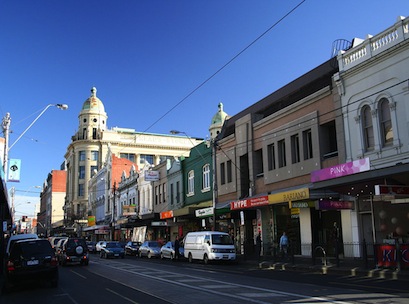
Melbourne’s retail strips will continue to be an important presence in communities and are well-placed to handle the introduction of Amazon in Australia, according to real estate firm Fitzroys.
Rick Berry, Fitzroys leasing director, said strip centres have been adjusting and re-mixing to take into account online retailing over the last few years, and that Amazon’s impact will be limited as much of the change has already taken place.
Berry said strip centres have seen a growing proportion of shops being used for service uses, with the number of new cafes, bars and restaurants well-documented.
“In addition to this there are a huge number of personal care businesses such as hairdressers, beauticians, skin care clinics, masseurs and gyms opening in the strips – trends we’ve seen growing in this part of the sector over the last three-to-five years,” he said.
“At this stage it is difficult for the online world to replicate this service offer.”
He said there will be further change but innovative and smart operators will continue to thrive, and well located properties will attract strong demand.
“Those fundamentals won’t change.”
Berry said many of the strip centres have struggled at various times throughout history, whether it is the result of changing retailing patterns, car parking issues or development of undercover shopping malls nearby.
“Typically at these times, rental rates reduce to reflect declining tenant demand and new retailers enter the strip,” he said. “Very often these retailers are new and innovative, and kickstart a new cycle for the centre. More generally, we anticipate retailers now successfully competing with online retail are typically getting it right to date and will be encouraged to review and revitalise the quality of their products and services.”
According to Berry, the retail mix in a strip centre reflects market demand rather than the pre-determined mix there is in major shopping malls, which may be seen as a strength and a weakness for strip retail, but reinforces the strips’ own individuality.
“Having said this, we manage a major sub regional centre and only one of the 65-plus shops is now a fashion retailer, one of the sectors most vulnerable to online, so some centres have also adapted to this new environment.”
Fitzroys stated the more recent revolution of medium density mixed-use retail/residential developments that has further accentuated the extended trading cycles of these centres and added to their vibrancy.
“A large proportion of Melbourne’s rapid population growth is being accommodated in the inner- and middle-suburban retail strips and this is generating sustained local demand – particularly in the hospitality and retail services sectors,” Berry said. “Melbourne’s population growth has been underpinning all sectors of what would otherwise have been a weak retail leasing market over the last few years.”
Fitzroys director David Bourke says Melbourne’s retail strips are always cyclical, both as a sector and individually.
“Subdued tenant demand over the last few years has not been as severe as it was in the 1990s and as we’ve typically seen, the more significant vacancy and rental growth issues relate to a handful of centres rather than the whole sector,” he said. “In some centres, such as High Street, Armadale where there is a low level of vacancy, we are seeing significant rental growth – probably in the order of 20 per cent.”
He added that generally, this is often the time when there are good buying opportunities and the chance to buy in anticipation of stronger tenancy take-up and future rental growth.
Bourke said investors have shown ongoing faith in retail strips across Melbourne, with sales achieving benchmark figures and yields of the four per cent mark and below.
In recent weeks Fitzroys sold the Bakers Delight in Port Melbourne’s Bay Street for $2.7 million at a record building rate of more than $31,000 per sqm, and the Commonwealth Bank at 414 Hampton Street, Hampton at 3.2 per cent. Since the beginning of Spring, it has also sold a classic double-fronted retail property at 1425-1427 Malvern Road, Malvern, leased to Antiques and the Milton Wine Shop for $3.02 million, at 2.68 per cent; Russian restaurant Nevsky at 476 Glen Huntly Road in Elsternwick for $1.5 million at 3.7per cent; the Devola fruit shop at 616 Hampton Street for $3.385 million at sub-3.5 per cent; and 28 Puckle Street – marketed for the first time in 105 years – for $1.7 million at 3.5per cent.
Access exclusive analysis, locked news and reports with Inside Retail Weekly. Subscribe today and get our premium print publication delivered to your door every week.





